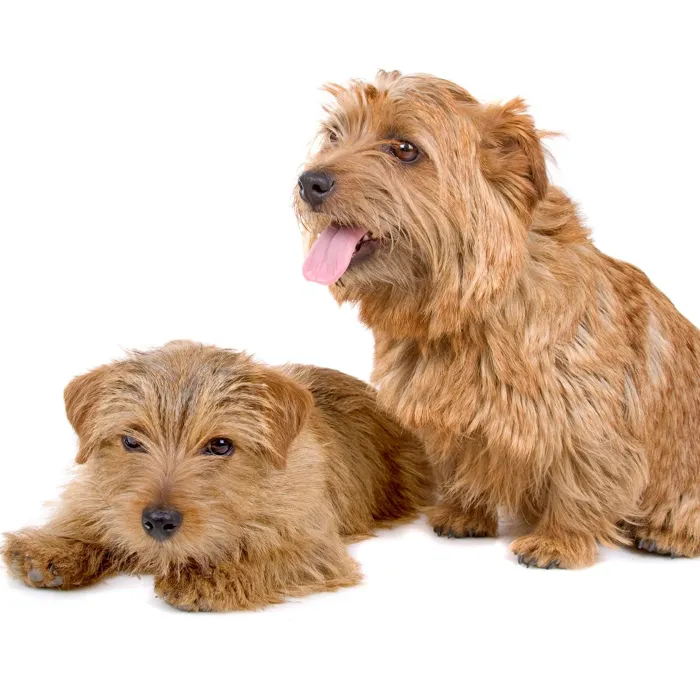Norfolk Terrier

Norfolk Terriers are little, cute, and loyal, and they will gladly curl up in your lap, but don’t dare call them lapdogs. Norfolks, despite their toyish qualities, are genuine terriers—feisty, confident, sturdy, and game for adventure.

Ask About Norfolk Terrier ?
Breed Traits
General Appearance
The Norfolk Terrier, game and hardy, with expressive dropped ears, is one of the smallest of the working terriers. It is active and compact, free-moving, with good substance and bone. With its natural, weather-resistant coat and short legs, it is a "perfect demon" in the field. This versatile, agreeable breed can go to ground, bolt a fox and tackle or dispatch other small vermin, working alone or with a pack. Honorable scars from wear and tear are acceptable in the ring.
Size, Proportion, Substance
Head
Neck, Topline, Body
Forequarters
Hindquarters
Coat
Color
Gait
Temperament
Group
Terrier
About
History
Standard
Nutrition
Grooming
Exercise
Training
Health
All pets have found there homes! Sign up to be notified when new pets are added so you don't miss out.


